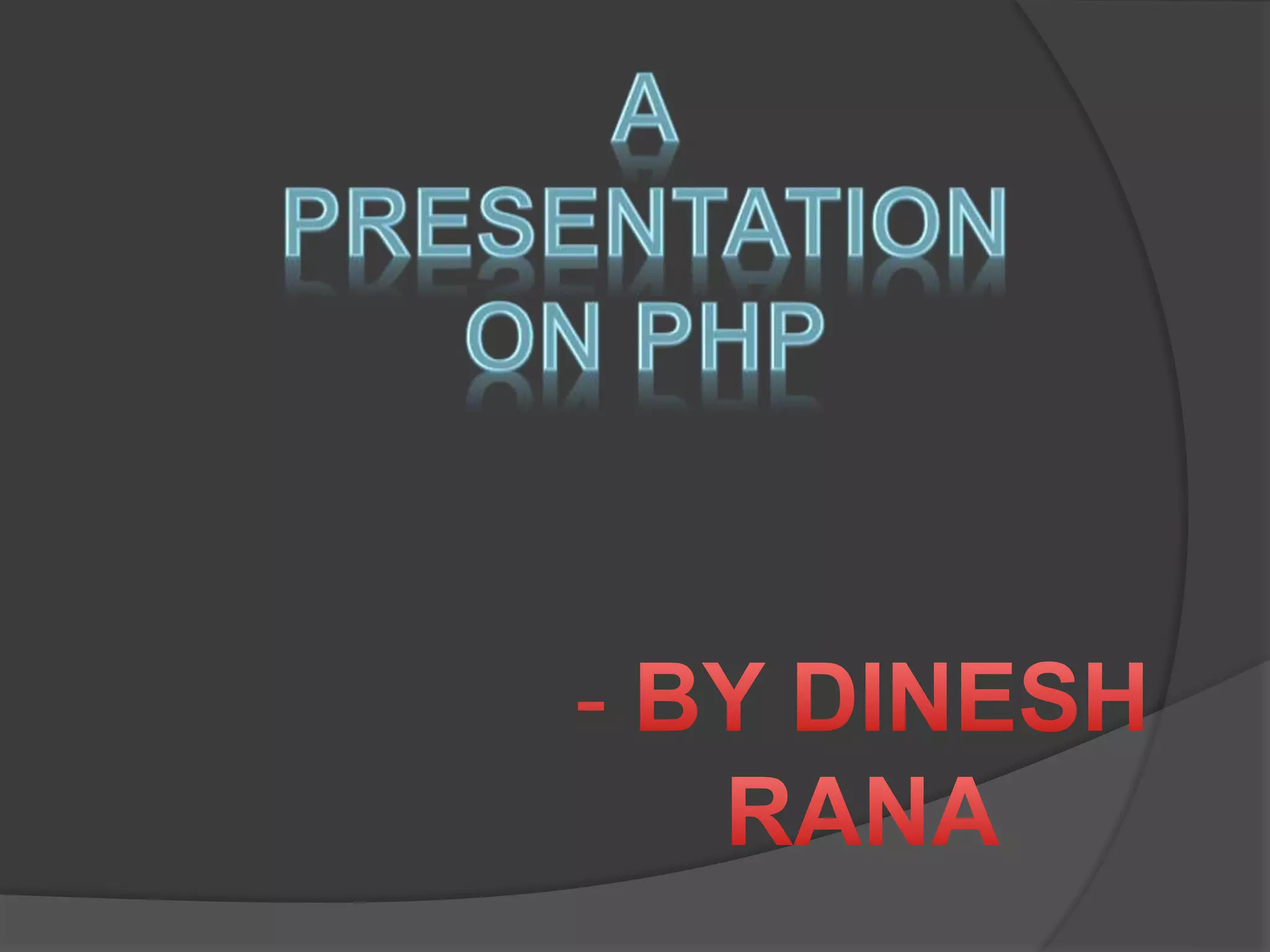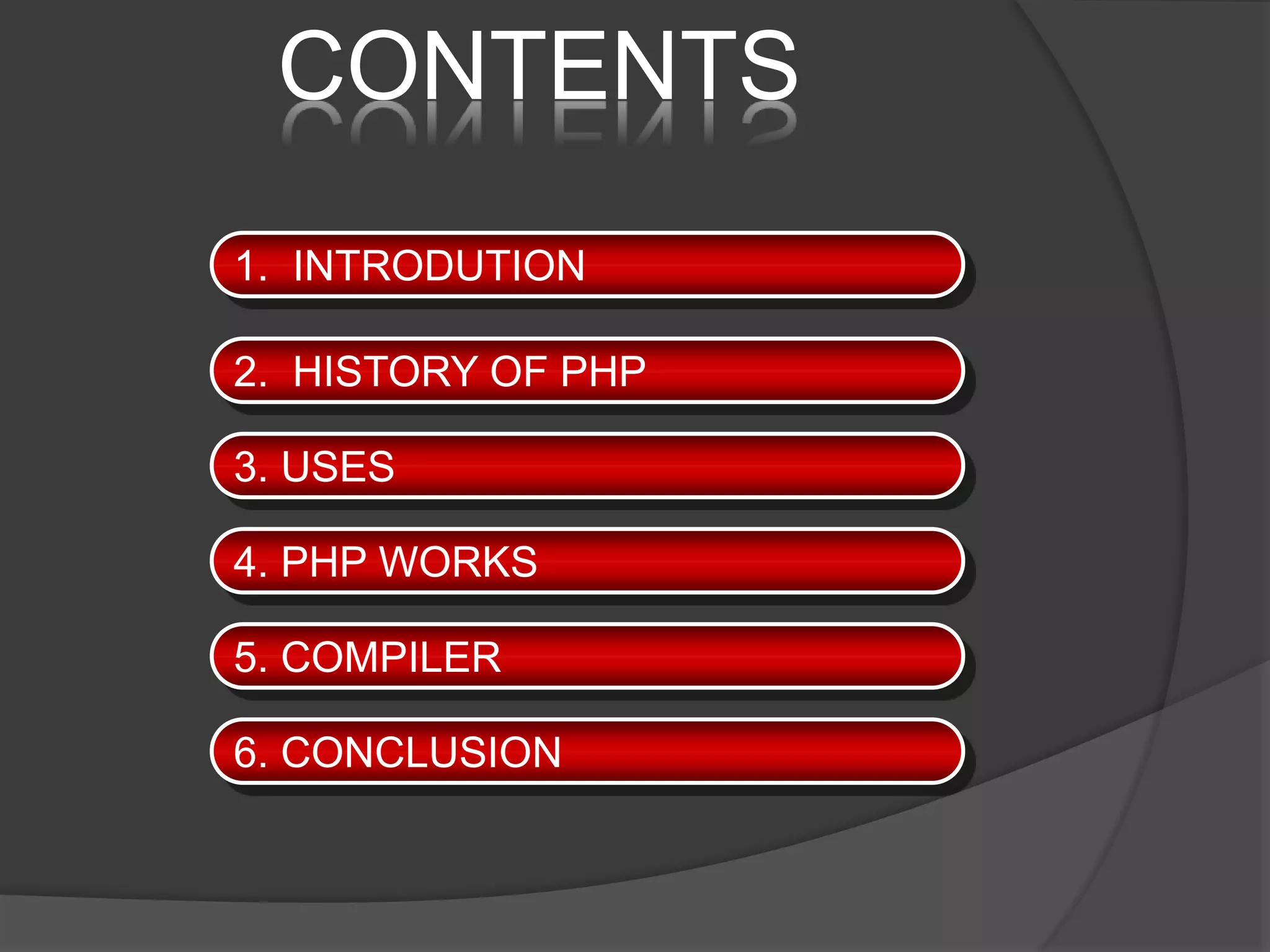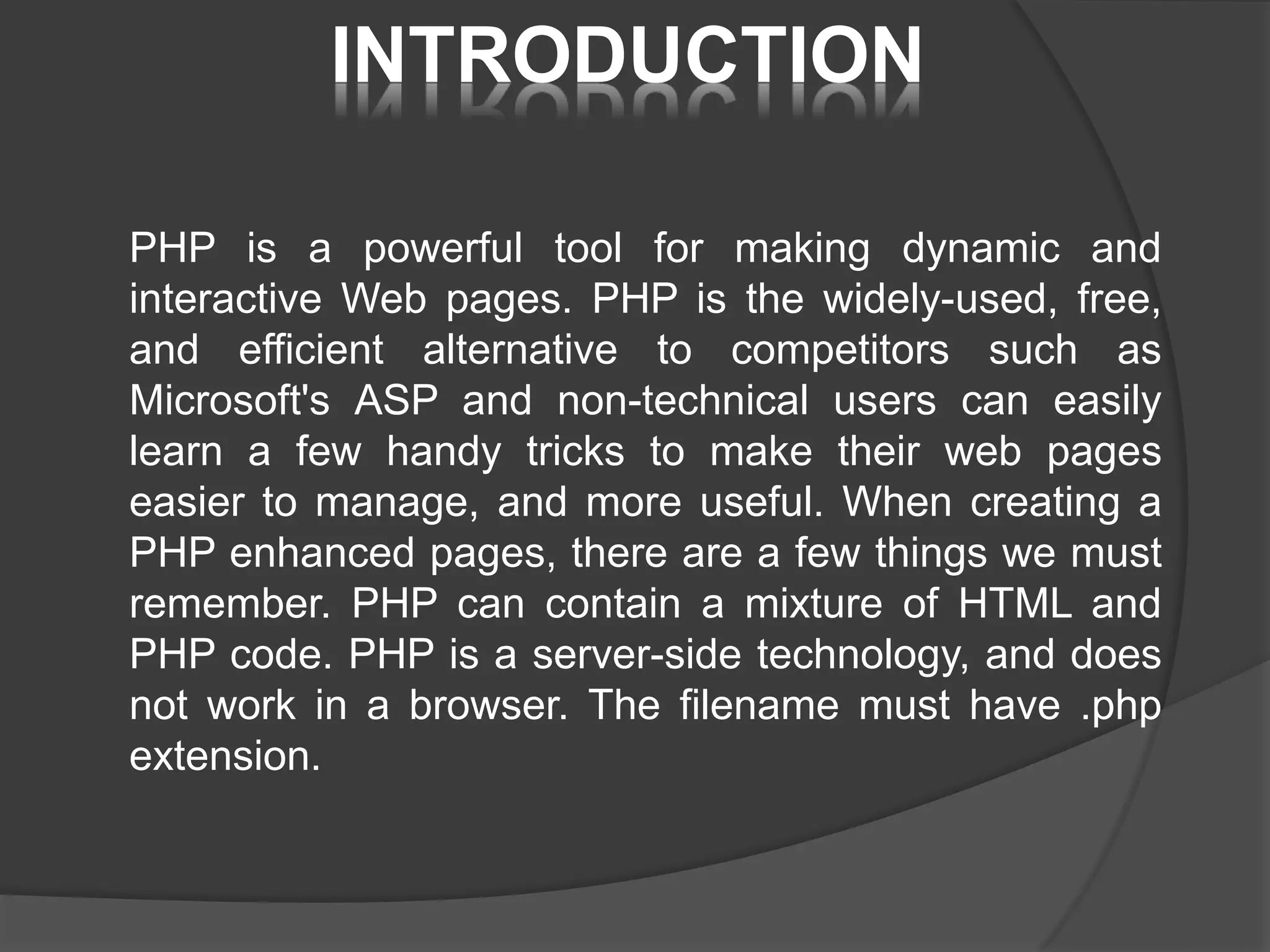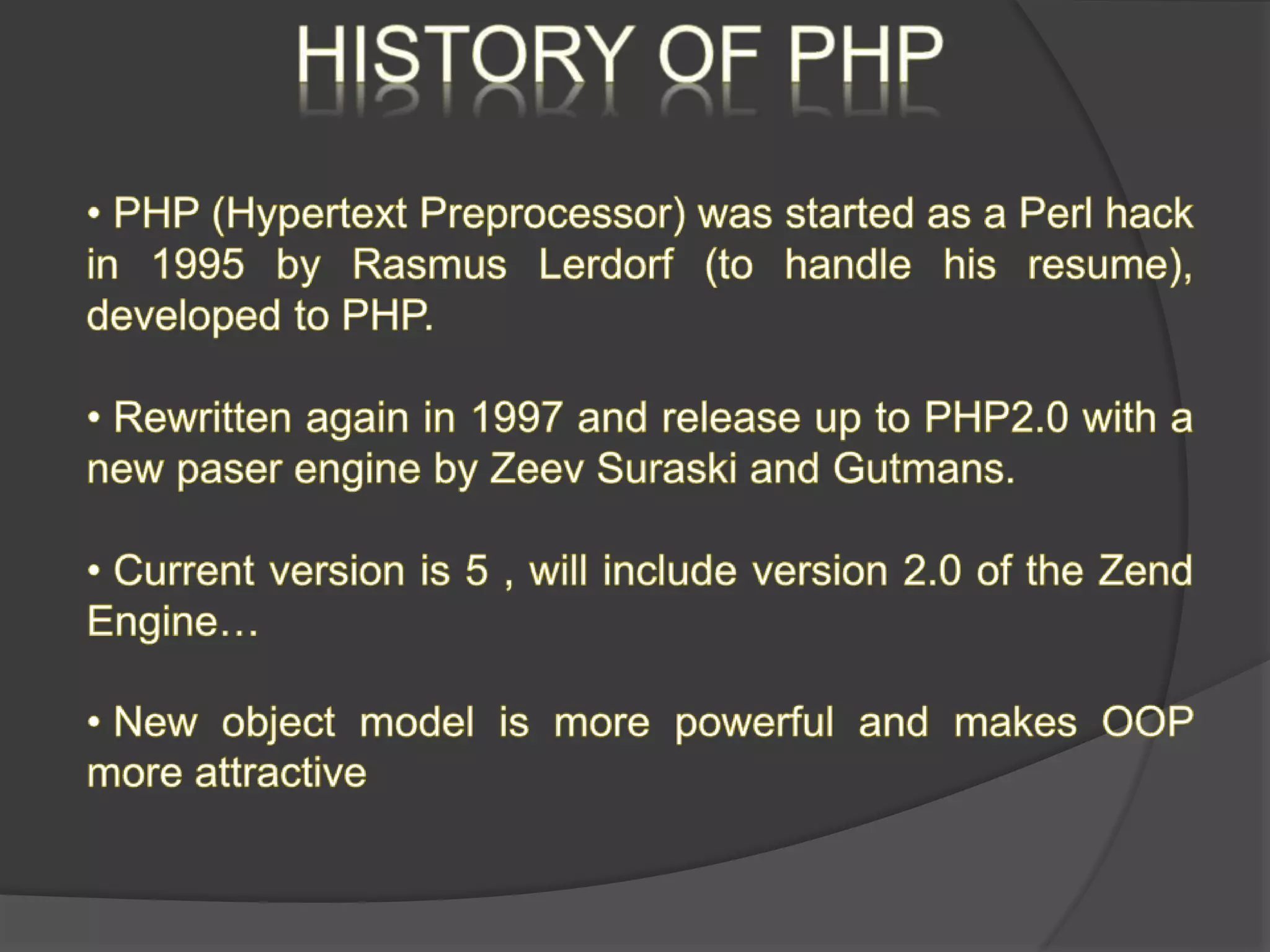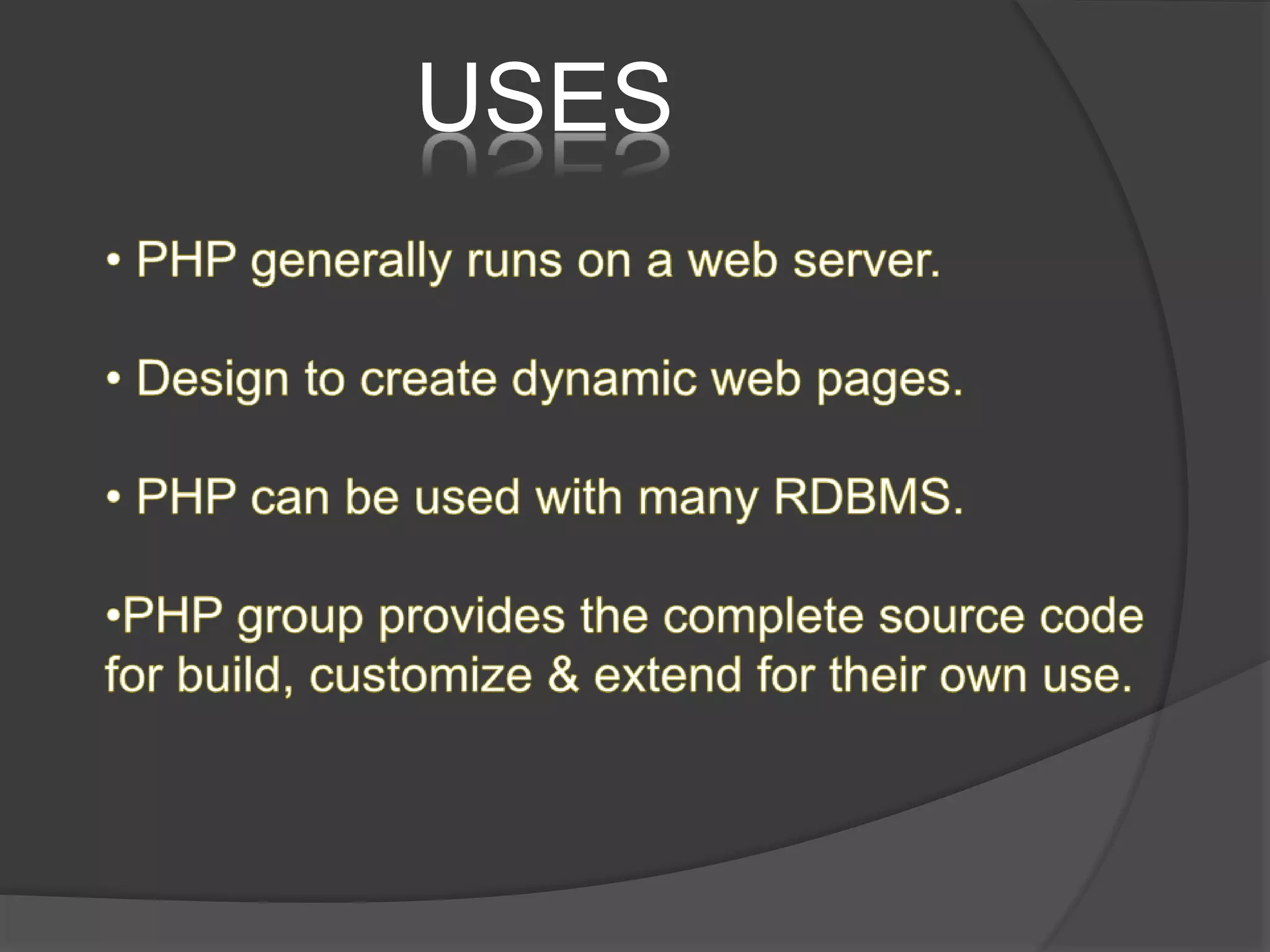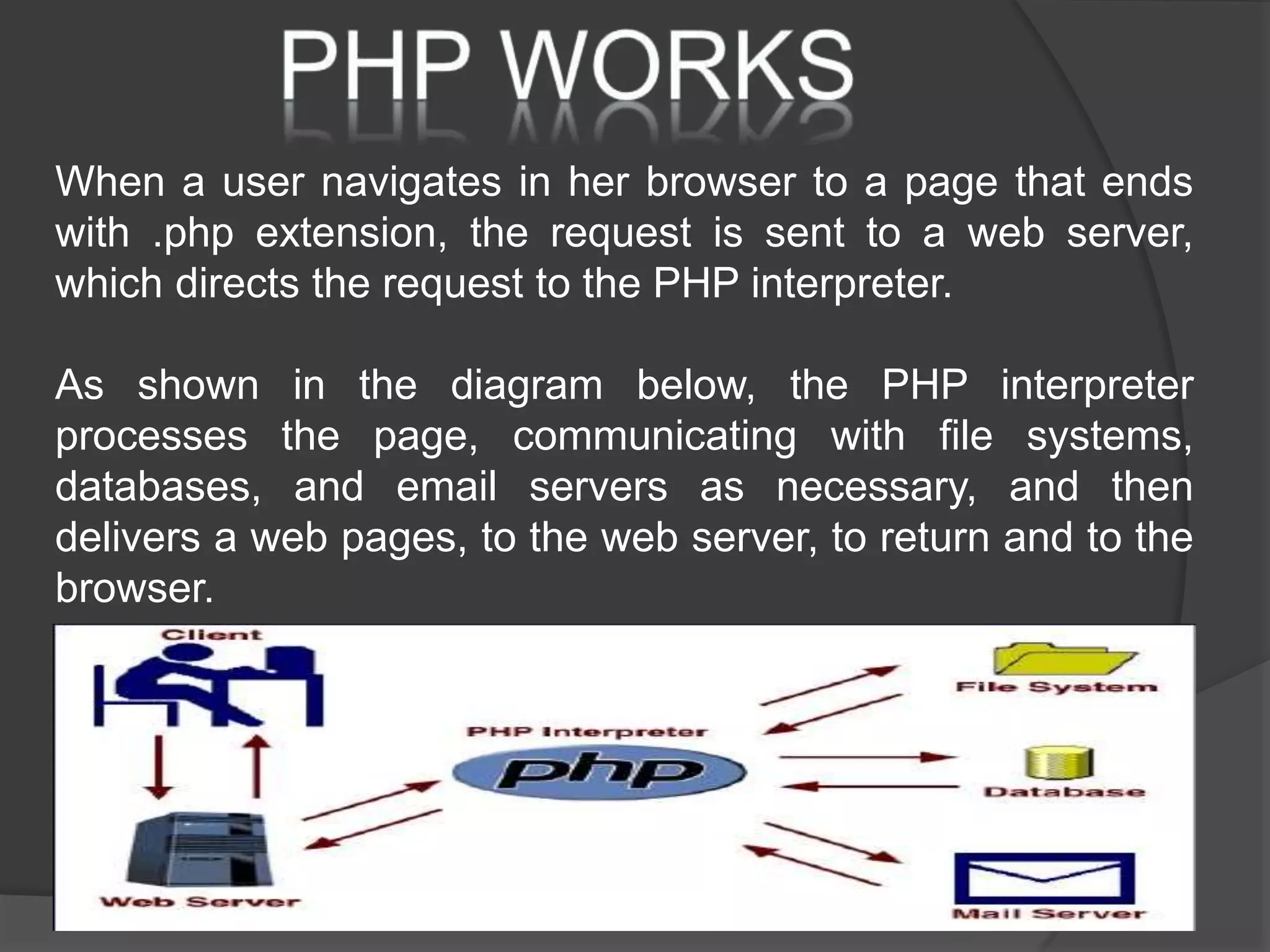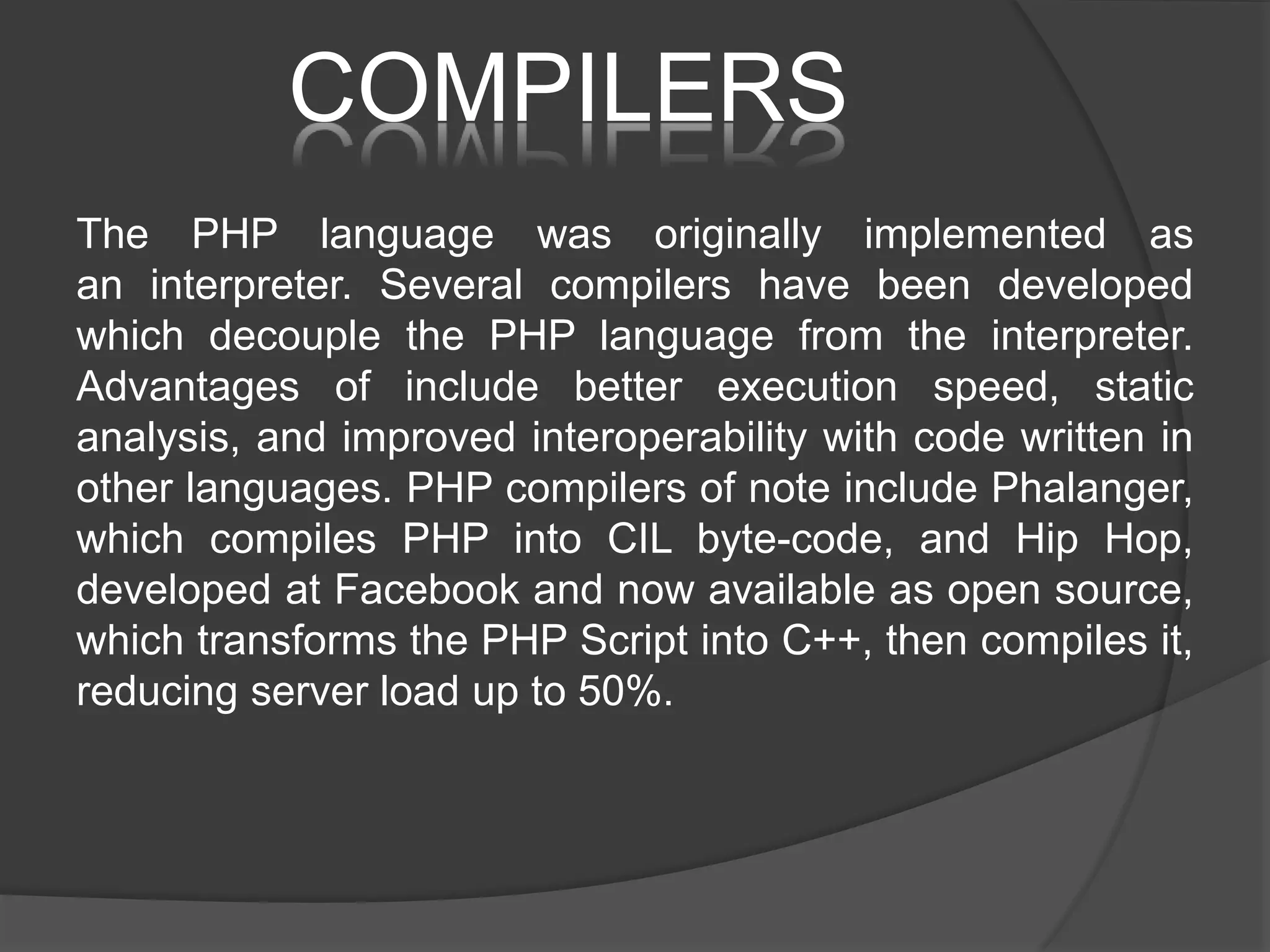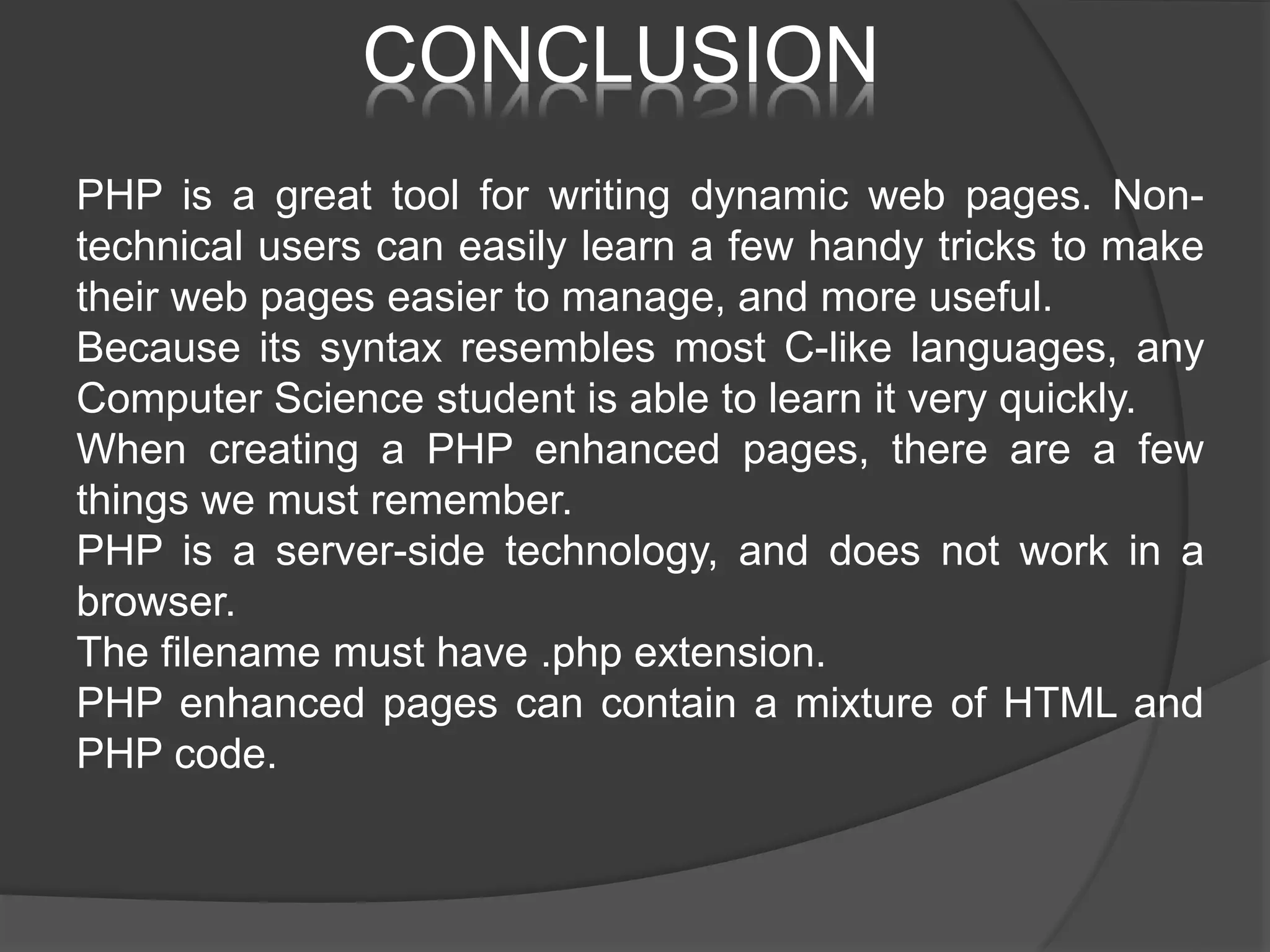PHP is a widely used scripting language for building dynamic web pages. It allows non-technical users to easily create interactive web content. PHP code is processed on the server-side and returns fully rendered HTML to browsers. The document discusses how PHP works, its history and uses, compilers that optimize PHP code, and concludes that PHP is a powerful tool for creating dynamic websites.

